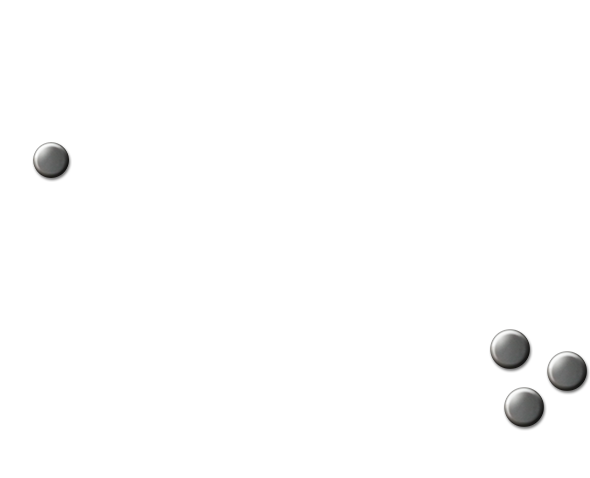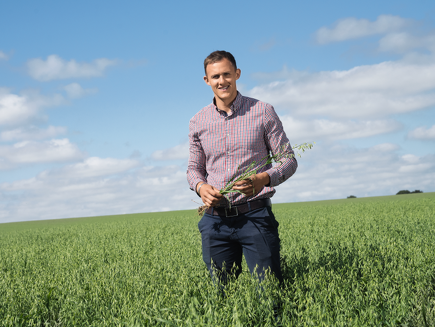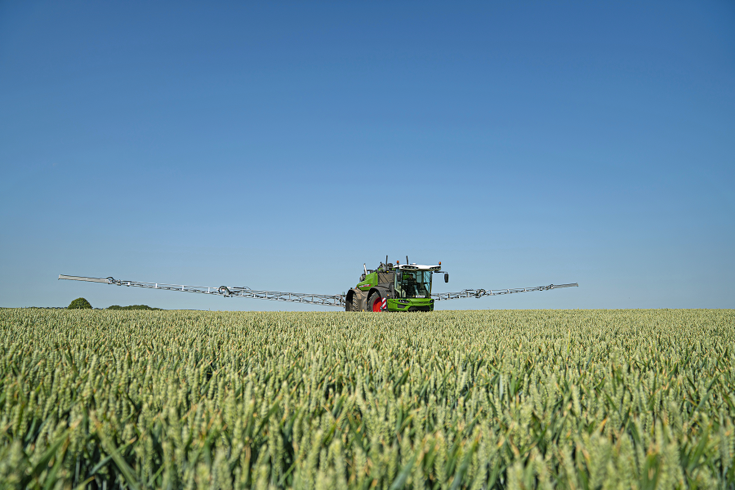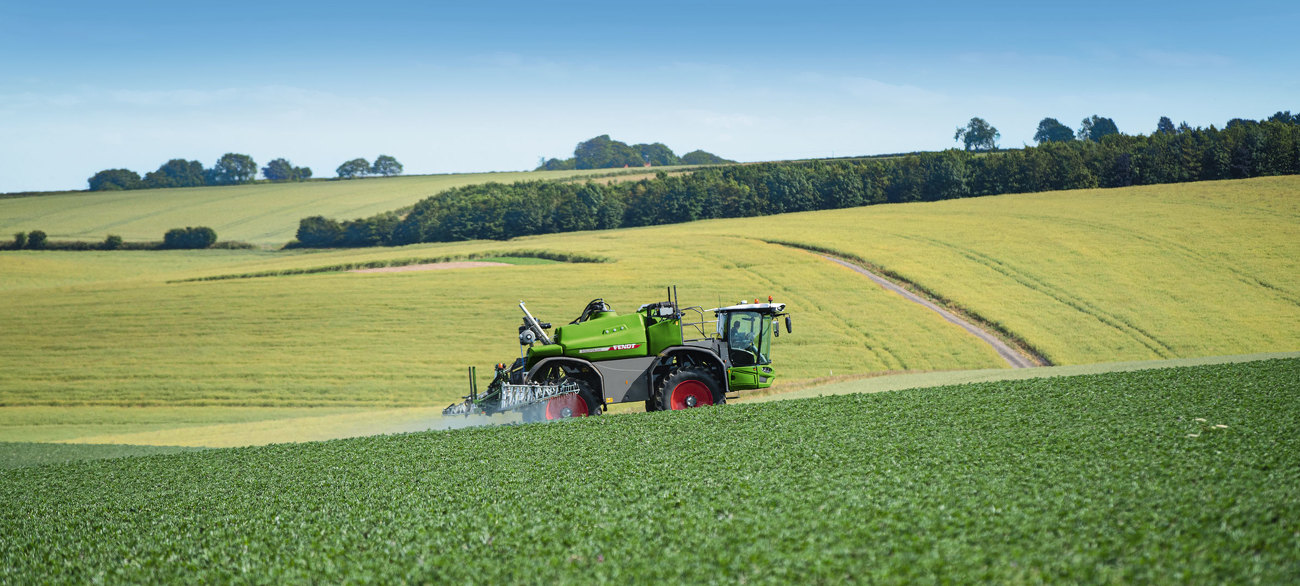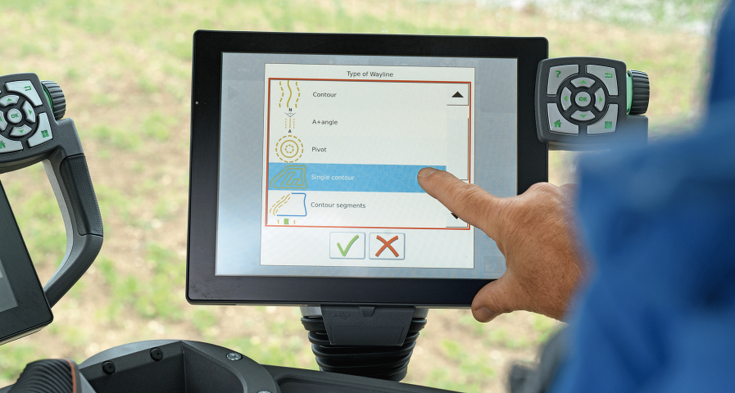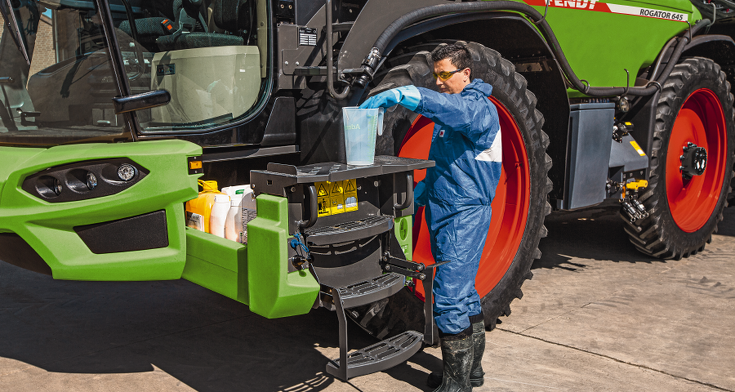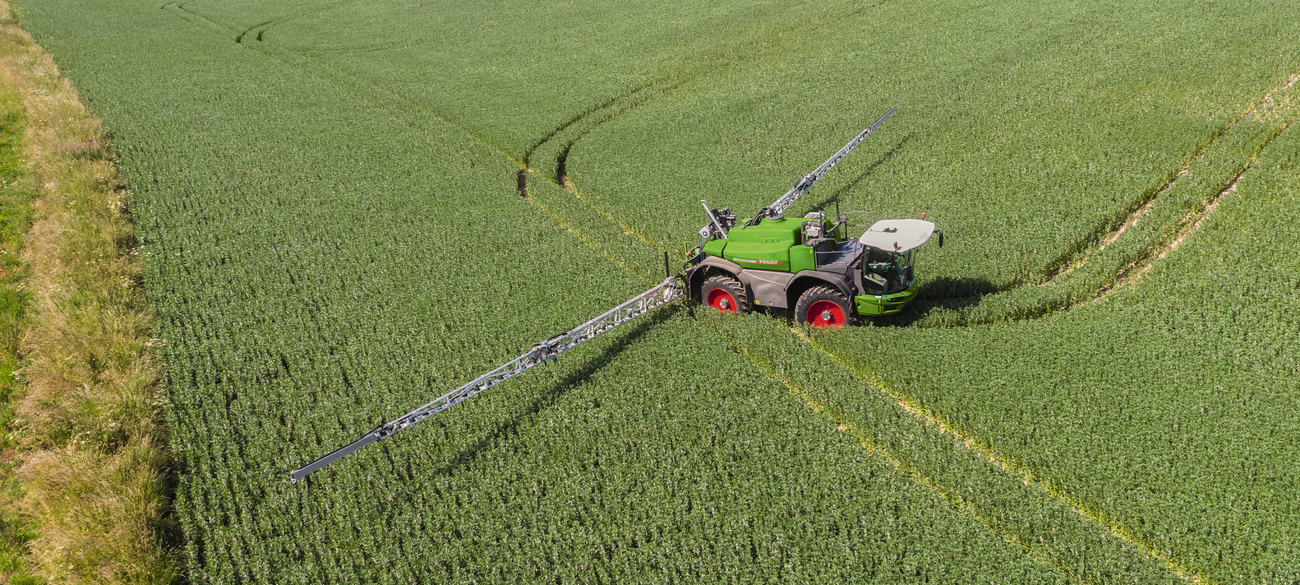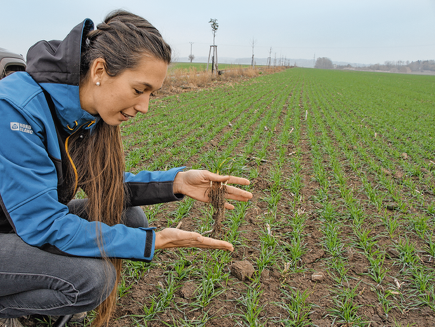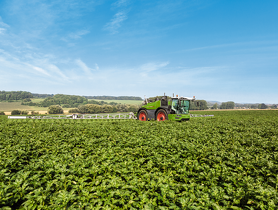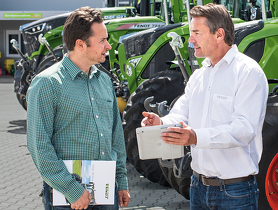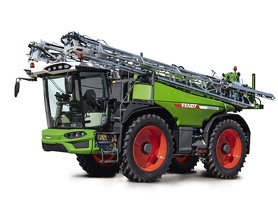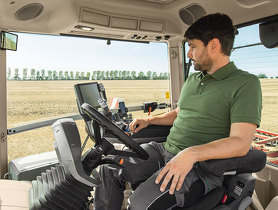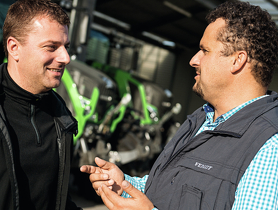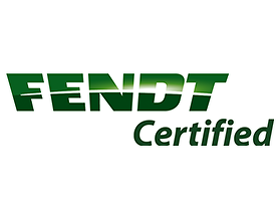At around 16 km/h, the Rogator pulls up and down the tracks in the wheat runout. Divergent, even land? Error indicator! Now the boom comes into play. The distance to the crop must be maintained, automatically. Horizontal and vertical boom movements, which can be attributed to the terrain or to the acceleration and deceleration of the vehicle, are almost eliminated by the even pneumatic dampers. The parallel linkage and articulation of the lift arm fitted in front of the rear axle keep the centre frame close to the rear axle, and transfer very little chassis movement to the boom. With the OptiSonic boom height control system based on ultrasound sensors, the right, middle and left sides of the boom automatically and separately follow the ground. This ensures operational safety and compliance with increasingly stringent environmental regulations. The liquid fertiliser is applied specifically as required, which ultimately means using less. But what is even more important for the farmer, is that he knows the fertiliser is getting to where it is needed and can do its job. What's more, human errors are almost excluded with the integrated software. Data on the application quantity and time of the applied product, as well as the user (name, approval number of the certificate of expertise for plant protection products, etc.) are recorded and documented. Current climatic conditions (temperature, humidity, wind strength) can also be recorded using an ISOBUS weather station for complete documentation. Once the job is complete, the data goes back to the office wirelessly. Chris now has the data in lack and white in his field database. There might still be the odd snag, but only because he craves even more documentation. “It's an excellent system that will help make data management even easier, as development advances.” This should also make his day-to-day work easier and reduce he spends on his PC documenting the work.
